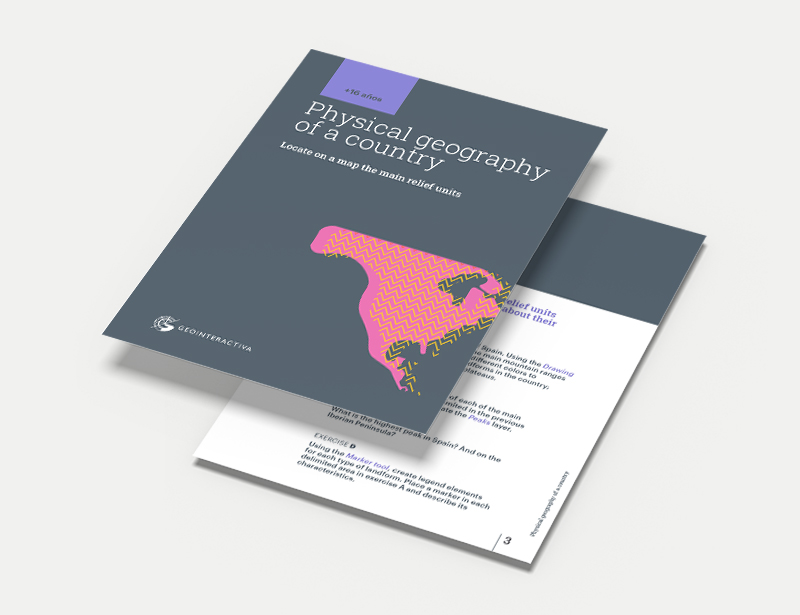
high school (+16 años)
Physical geography of a country
In this activity, you will learn what geography is and its importance for understanding the territory through the study of its terrain, climate, hydrography, and all those physical elements that are part of the planet.
In this downloadable, you will find a PDF resource with instructions to liven up your classes. On one hand, we show you which platform tool you will be working with, and on the other hand, we offer activities suitable for students over 16 years old.
Do you want your classes to be stimulating? Start today with Geointeractiva.
we propose teaching geography in a fun way.
What will your students learn from this educational activity?
Physical geography of a country
Geography is a subject that studies the Earth’s surface, its relief, climate, hydrography, and all physical elements that form part of the planet. It is important for high school students to know the main physical elements of their own country, as this will allow them to better understand their environment, value the natural diversity of the territory, and understand the problems and challenges they face in their geographical environment.
The importance of knowing the geography of one’s own country
Knowing the physical elements of one’s own country is important for several reasons. First, it allows students to have a deeper understanding of the place where they live, including its geography, history, and culture. This can help them develop a sense of national identity and pride.
Second, knowing the physical elements of one’s own country is important for understanding global geographic processes. For example, if students understand how the water cycle works in their own country, they can apply that knowledge to better understand climate change and its effects on a global level.
Third, understanding the physical elements of one’s own country is important for decision-making. Students who understand the natural resources of their country and their distribution can make more informed decisions about their use and conservation.
The main physical elements of a country
The main physical elements of a country include its relief, hydrography, climate, and vegetation. They are briefly described below:
Relief: The relief of a country refers to the topographic features of the territory, including mountains, plains, plateaus, and depressions. Relief influences many aspects of life in a country, from agriculture to transportation and housing.
Hydrography: Hydrography refers to bodies of water in a country, such as rivers, lakes, seas, and oceans. Hydrography is important for navigation, fishing, and agriculture, as well as for environmental conservation.
Climate: The climate of a country refers to long-term meteorological patterns, such as temperature, humidity, precipitation, and winds. Climate influences many aspects of life in a country, from agriculture to health and safety.
Vegetation: Vegetation in a country refers to the plants that grow in its territory, from forests to deserts and tundras. Vegetation influences many aspects of life in a country, from agriculture to tourism and environmental conservation.
How to learn more about the geography of one’s own country
There are several ways in which students can learn more about the geography of their own country. One of the simplest is to consult maps and atlases, which will provide information about the relief, hydrography, climate, and vegetation of their country.
Another way to learn more about the geography of one’s own country is through direct experience. Students can take trips and excursions to learn about the geographical regions of their country, visit natural science museums and national parks, and talk to experts in the field.
Additionally, there are online resources such as Geointeractiva that can be useful for students who want to learn more about the geography of their own country. There are several websites that provide detailed information about the relief, hydrography, climate, and vegetation of each country, as well as about environmental issues and conservation policies in each place.
Conclusions
In summary, knowing the main physical elements of one’s own country is essential for better understanding the environment in which we live, valuing the natural diversity of the territory, and understanding the problems and challenges we face in our geographical environment. In addition, understanding the physical elements of one’s own country is important for understanding global geographic processes and making informed decisions.
Therefore, it is important for the teaching of geography in schools to include understanding the main physical elements of each country. Students should be able to understand the climate patterns, topographical features, bodies of water, and vegetation zones of their own country, as well as the importance of these elements to their daily lives.